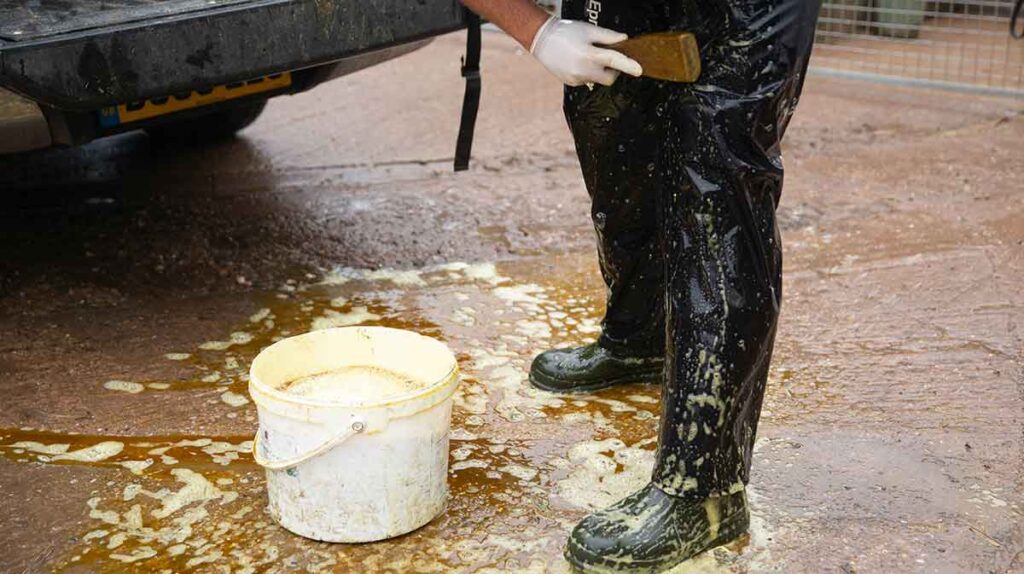We are frequently reminded that biosecurity prevents the introduction and spread of disease into pig herds, and these actions preserve animal health.
With better animal health comes better animal welfare, sustainability of production systems and reduced antimicrobial use.
The importance of maintaining good biosecurity is drawn into stark clarity with recent outbreaks of foot-and-mouth disease in Germany, Hungary and Slovakia, the persistent spectre of African swine fever in continental Europe and continued dysentery challenges in the UK.
This summer saw an inaugural biosecurity event, the First Conference on Animal Biosecurity, hosted by the Autonomous University of Barcelona, and I was lucky enough to attend.
This event was one of strong collaboration, marking the end of the four-year EU BETTER Cost Action project (better-biosecurity.eu) and the beginning of the recently established World Animal Biosecurity Association (wababiosecurity.com).
The conference brought together more than 180 delegates from across the globe to engage with more than 90 oral presentations and posters, sharing the outcomes from the BETTER Cost Action project, and current research into biosecurity interventions and their implementation.
Diverse topics
Topics covered were diverse. Socioeconomic work offered information on how the administrative burden of biosecurity protocols can result in the estrangement of farmers from sustained and effective implementation, as well as examples of biosecurity materials and tools specifically targeting relatability and farmer engagement.
Farm-level work covered a range of livestock species, including pigs, poultry and cattle. It showcased the effect of biosecurity on herd performance and antibiotic use and the challenges of implementing biosecurity in extensive production systems.
We also learned about the efficacy of boot hygiene practices, lorry cleaning and disinfection, and how these can be measured. At policy level, it was shown how insight into biosecurity is defined internationally and communicated to policymakers, and how current biocide regulations influence new product development for use on farm.
This conference also gave the George Pig Practice an opportunity to share our work linking health management and production performance with biosecurity assessment and improvement.
Conference hot topics
- Socio-economics
- Role of new technologies in improving biosecurity
- Regional biosecurity
- Future needs in research and education
Key themes
Three key themes ran through the content of the conference:
- Communication
- Technology
- Assessment and measurement.
To engage all stakeholders in driving changes in biosecurity practices, effective communication and collaboration between all those involved is essential.
Poor implementation is most likely underpinned by a lack of understanding of the limitations and drivers for specific stakeholders. Appreciating behaviours and how they can be influenced to elicit positive outcomes should not be underestimated.
The ‘human’ element in achieving and maintaining good biosecurity cannot be overlooked. However, technological advancement does and will continue to play a fundamental role in biosecurity development.
Whether that is digitisation of your pest control programme, QR code facilitation of visitor logs, network evaluation of vehicle movements, wearable technology to evaluate adherence to biosecurity protocols or virtual reality biosecurity training, there are many systems already operating effectively, and this is an ever-growing area of research.
The ability to assess and measure the implementation of biosecurity measures is important to gauge what works and what doesn’t at an individual farm level.
The Biocheck biosecurity tool (biocheckgent.com) developed by the University of Ghent was referenced in multiple presentations and posters as a globally accepted method to assess biosecurity.
This tool has adaptations for multiple species as well as different types of farming system. The need for continued evaluation of the cost-effectiveness of biosecurity interventions was highlighted, given that it is a strong driver for sustained engagement.
The enthusiasm of those working in the field of animal biosecurity was palpable throughout this meeting, as was the commitment to continued creation of practical interventions with the tools to implement and measure them.
The World Animal Biosecurity Association now takes on the mantle to drive these goals across multiple species and production systems across the globe.
EU BETTER Cost Action
Biosecurity Enhanced Through Training Evaluation and Raising awareness.
The project is focused on addressing identified limitations to progress in the sphere of biosecurity:
- Lack of knowledge on ways to improve
- Shortage of effective communication methods
- Diversity of methods to assess and measure implementation of biosecurity measures and their cost-effectiveness
- Inadequate numbers of trained professionals.




